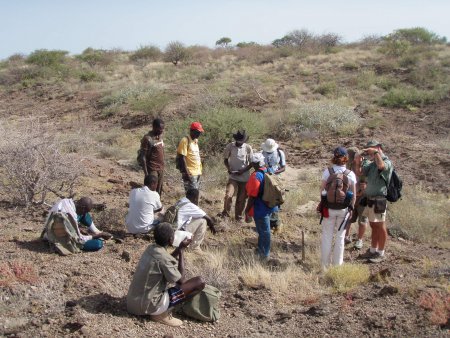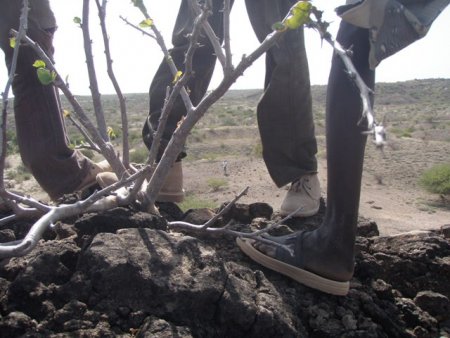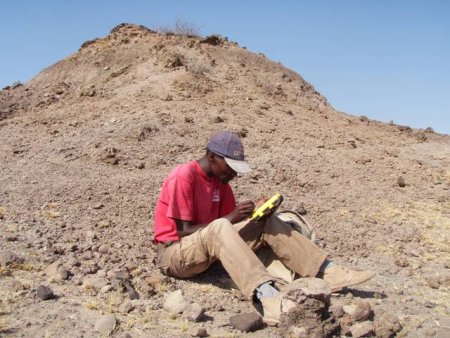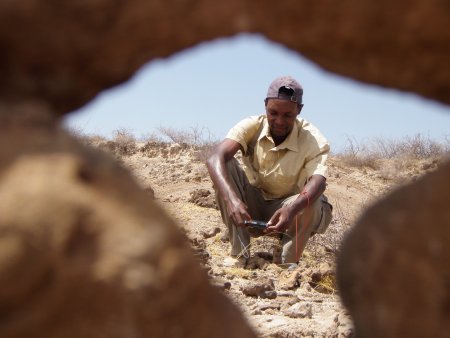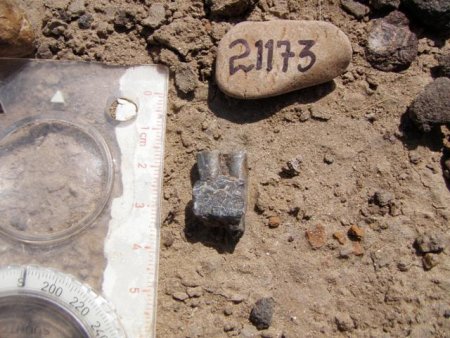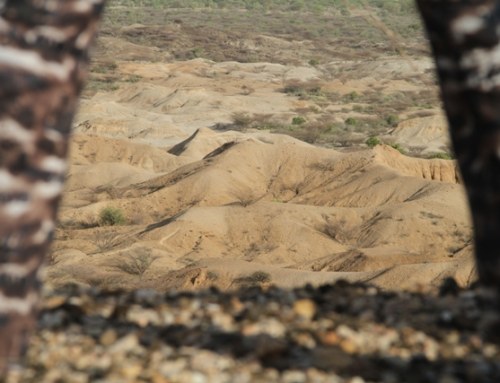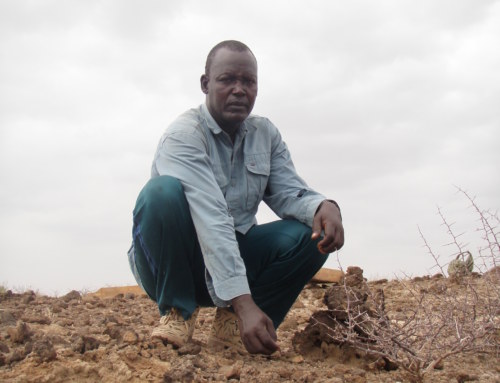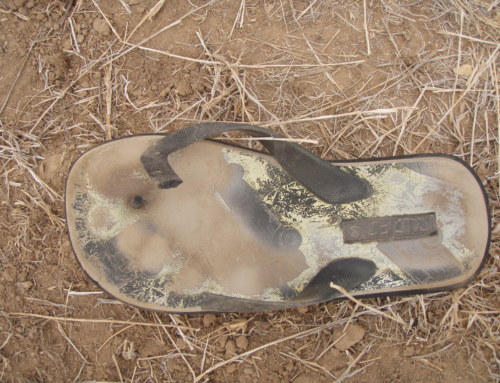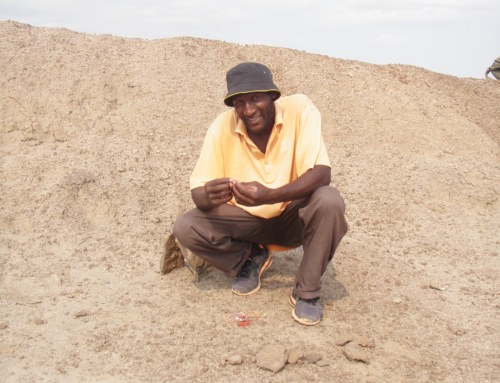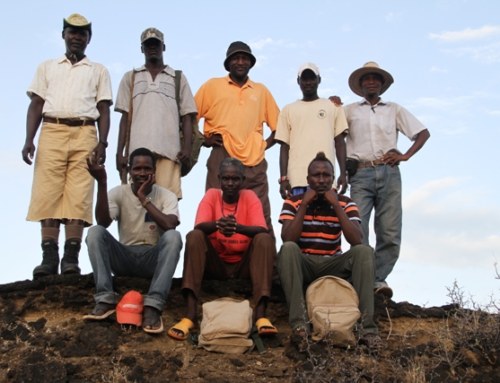Discovering a fossil specimen is the crowning moment for any fossil hunter. This work requires both mental and physical input in order for the fossil specimens that adorn our museums to be exhibited.

Crew members examine a fossil specimen just after discovery
|
The crew undergoes rigorous training from experts in all fields including geological classes in the field. These help them to be able to identify the geological sections where the fossils come from as well as the sections where fossils are likely to be found as a result of exposure due to erosion
A typical geological class out in the badlands: crew members learn basic geology and this helps save time and resources
Discovering a specimen is work that has practiced and tested steps that must be followed in the event that a fossil hunter has discovered a fossil. Ordinarily, a crew member will call a documentor once he finds a specimen that must not be moved from the ground save for if it is not embedded on the ground
Examining a fossil with other crew members to help in identification. Sometimes the crew members just come to marvel or celebrate with the discoverer
Then the painstaking work of documentation begins. Here preliminary data is collected with a field data hand held computer and a GPS device that records the actual geographic position from where the specimen has been found. This data is then edited by the collectors who are experienced and experts in anatomy and geological studies.
Inputting preliminary data on a handheld computer in the field: this data is crucial because it records the first contact before the ground is disturbed and is the source of any subsequent data added to the find
Before the documentor leaves the scene of the find, an image of the specimen is then taken with a powerful digital camera that records the best views for later identification in the laboratory and also as the permanent record of that discovery.
A photographer taking a shot of a specimen in the field as seen through a rock crevice: This forms the permanent record of that specimen before collectors disturb it
A first impression photo shot of a fossil specimen in the field together with the field number clearly visible on a stone. The compass give the scale of the specimen

